Discover 17 interesting facts about Madrid, Spain, the vibrant capital city of the Iberian Peninsula. Learn about its history, culture, and famous landmarks like the Prado Museum and Retiro Park.
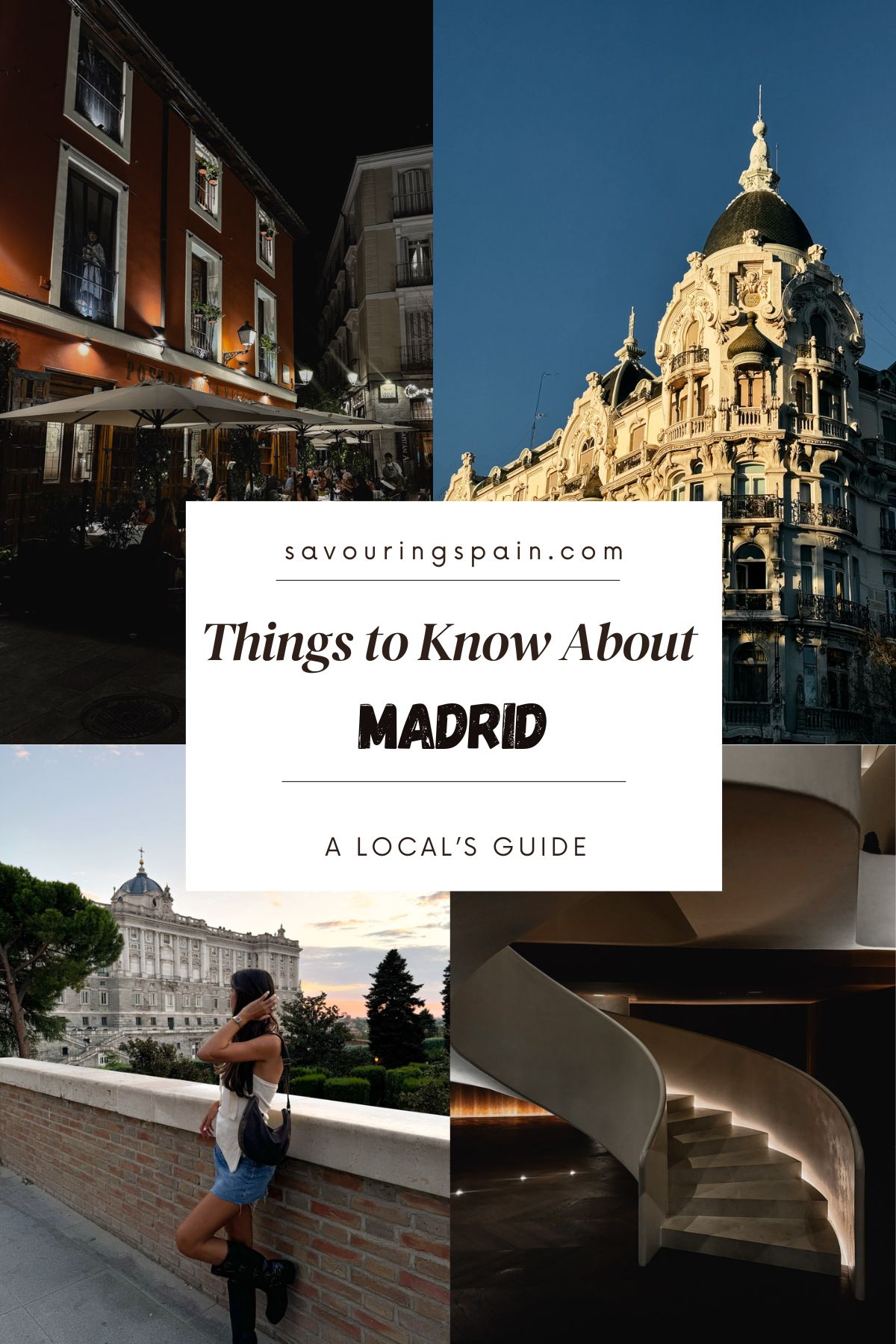
When you think of Madrid, what comes to mind? Maybe it's the passionate culture, the legendary Real Madrid football team, or the rich history that flows through every corner of the city.
As the capital city of Spain, Madrid is more than just a bustling European metropolis—it’s a center for art, history, and life. Whether you’re planning your first visit or just curious about this remarkable city, here are 17 fascinating facts about Madrid, Spain, optimized for all the keywords you might need to explore further.
Jump to:
- Where Is Madrid Located?
- 1. Madrid’s Population and Metropolitan Area
- 2. The Origin of Madrid’s Name
- 3. Madrid Is One of Europe’s Oldest Capitals
- 4. Madrid’s Royal Palace: A Glimpse into History
- 5. The Prado Museum: Art at Its Finest
- 6. Retiro Park: Madrid’s Green Oasis
- 7. San Isidro: Madrid’s Patron Saint
- 8. Madrid and the Spanish Civil War
- 9. Madrid’s Hidden Egyptian Temple
- 10. Madrid vs. New York: The Time Difference
- 11. Real Madrid: A Global Icon
- 12. Madrid’s Love for Food Markets
- 13. Madrid’s Bullfighting Tradition
- 14. Madrid’s Underground Secrets
- 15. Madrid’s Vibrant Nightlife
- 16. Madrid’s Literary Legacy
- 17. Madrid’s Futuristic Skyscrapers
- What Is Madrid Famous For Shopping?
- Fun Facts About Madrid in Spanish
- The Spain Flag in Madrid
- A Stroll Through History: Madrid’s Evolution
- FAQ'S
- Why Visit Madrid?
Where Is Madrid Located?
Madrid sits in the heart of the Iberian Peninsula, perfectly positioned as the capital city of Spain. It’s the third-largest city in the European Union by population, after London and Berlin. Its central location makes it the political and cultural hub of Spain. The city’s elevation is another unique feature, sitting at 667 meters (2,188 feet) above sea level, making it one of Europe’s highest capitals.
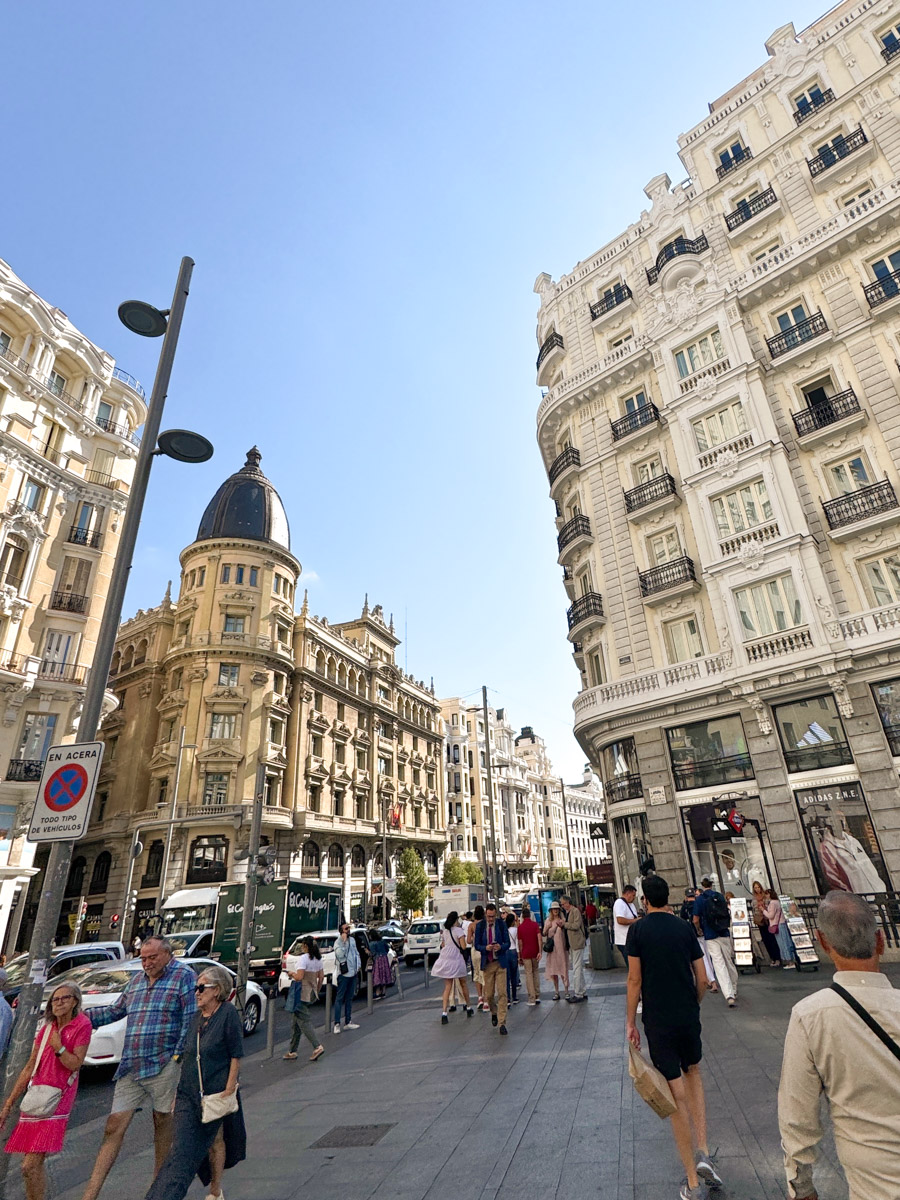
1. Madrid’s Population and Metropolitan Area
Madrid is home to over 3.3 million people in the city proper, and the metropolitan area houses more than 6.5 million residents. This makes it one of the largest European cities and a true powerhouse on the continent. The city’s diverse population adds to its vibrant culture, with a mix of international communities and native Madrileños.
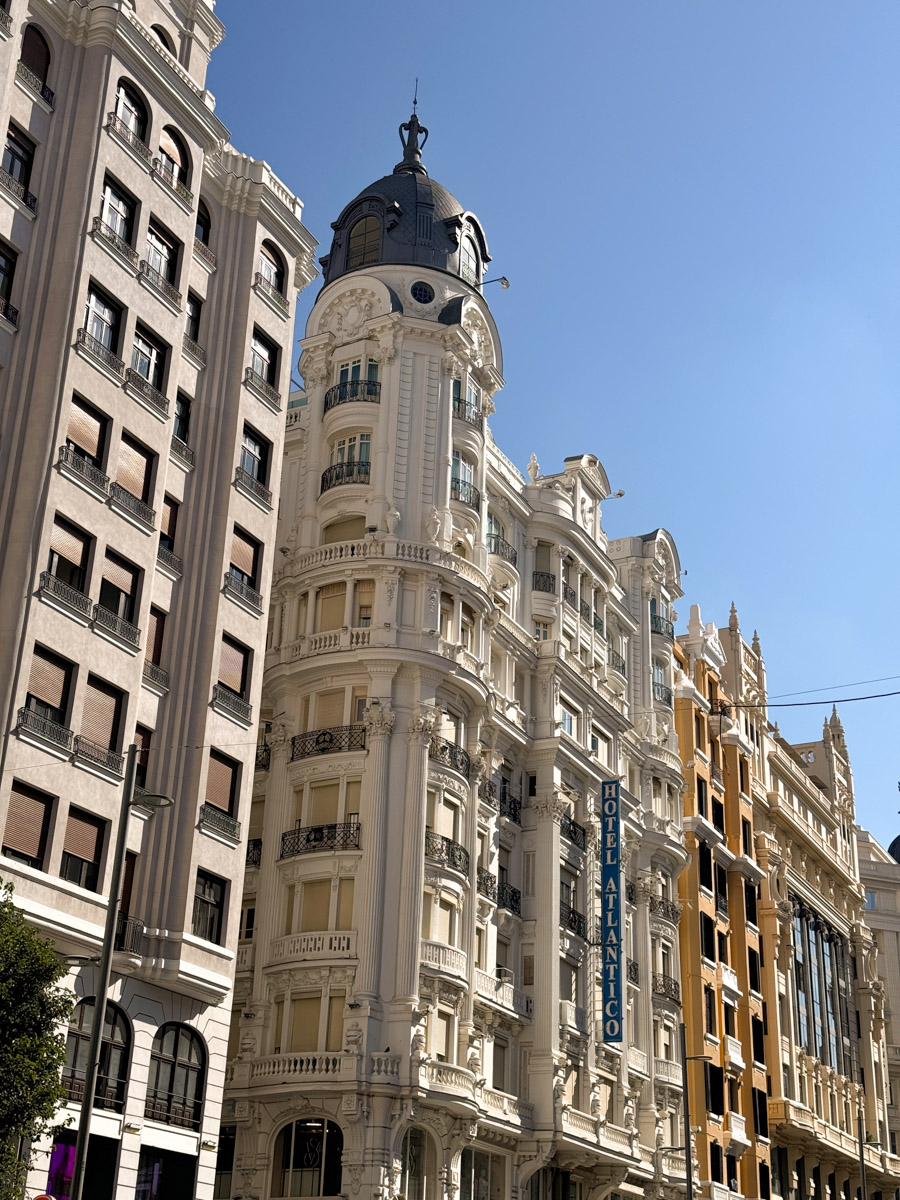
2. The Origin of Madrid’s Name
The city’s name, Madrid, originates from the Arabic word “Magerit,” meaning “place of abundant water.” The Manzanares River, which flows through the city, was central to its early settlement. This water-rich foundation has been a key factor in Madrid’s growth over the centuries, and the river remains a focal point for recreational activities today.

3. Madrid Is One of Europe’s Oldest Capitals
Though Madrid became the capital of Spain in the 16th century, its history goes back much further. By the 17th century, Madrid was already a cultural and political center.
The 19th century saw further growth, cementing its role as a leading European city. Walking through Madrid’s historic neighborhoods like La Latina or Austrias feels like stepping back in time, where the cobblestone streets and classic architecture tell stories of the past.
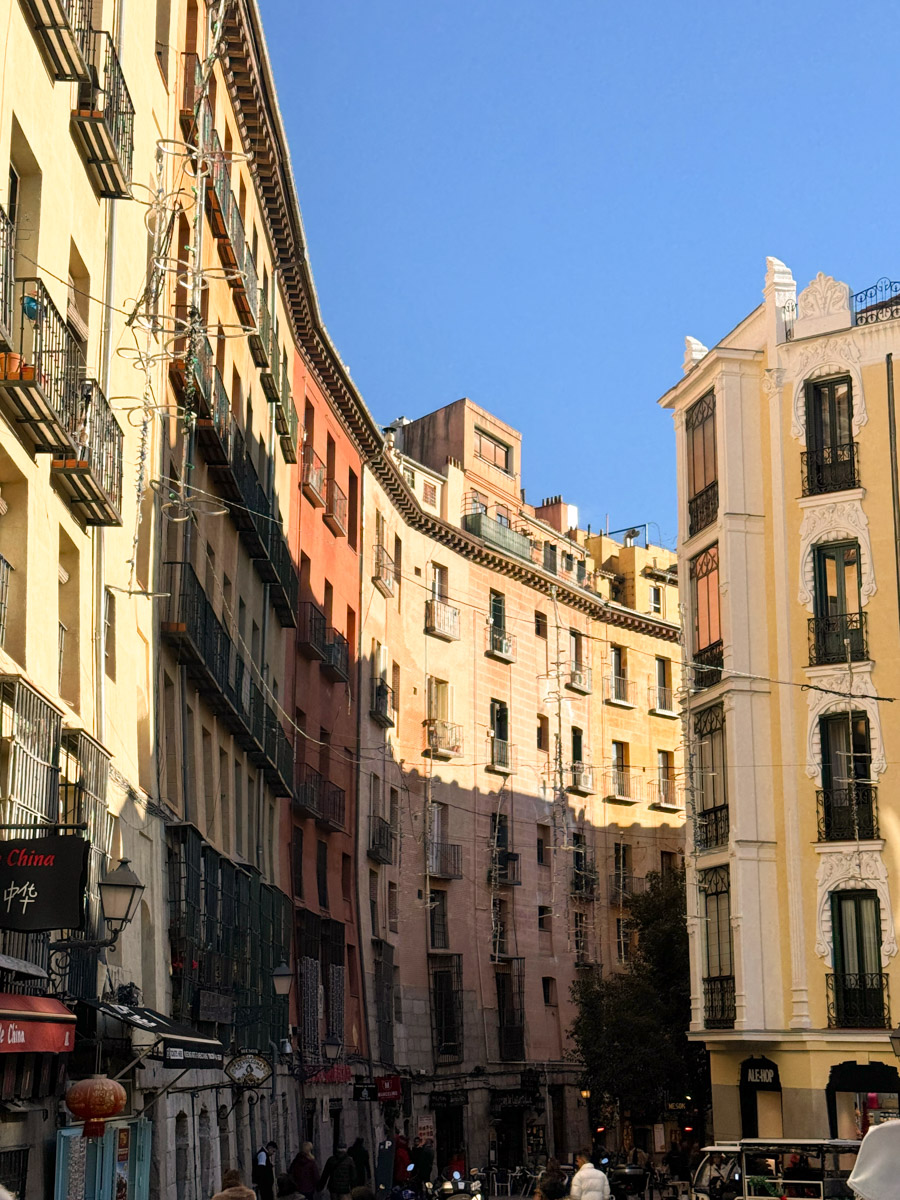
4. Madrid’s Royal Palace: A Glimpse into History
The Royal Palace of Madrid is the largest royal palace in Europe by floor area. Originally built in the 18th century, it’s now primarily used for official ceremonies. The architecture and interior reflect Spain’s opulent history. Visitors can explore its 3,418 rooms, including the lavish Throne Room and the Royal Armory, which houses one of the most important collections of its kind in the world.
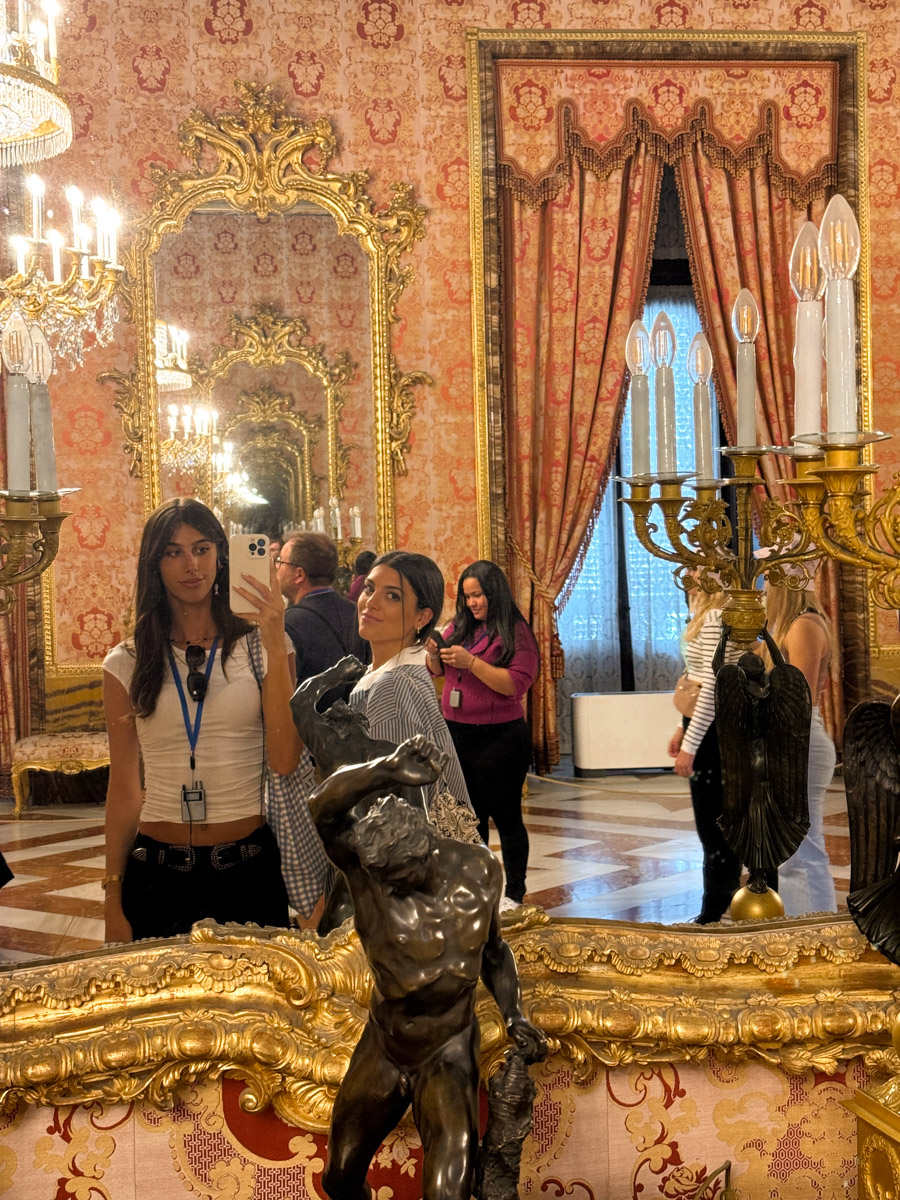
5. The Prado Museum: Art at Its Finest
Madrid is home to some of the world’s best art collections, with the Prado Museum being a standout. Housing works from Spanish masters like Velázquez and Goya, this museum is a must-visit for any art lover. If you’re curious about art from the 19th century or earlier, you’ll find countless treasures here. The museum also hosts temporary exhibitions, ensuring there’s always something new to explore.
6. Retiro Park: Madrid’s Green Oasis
The Retiro Park is a UNESCO World Heritage Site and offers a tranquil escape from the bustling city. Originally designed for royalty, the park features the iconic Crystal Palace and a large boating lake. It’s one of the top spots to relax in Madrid city.
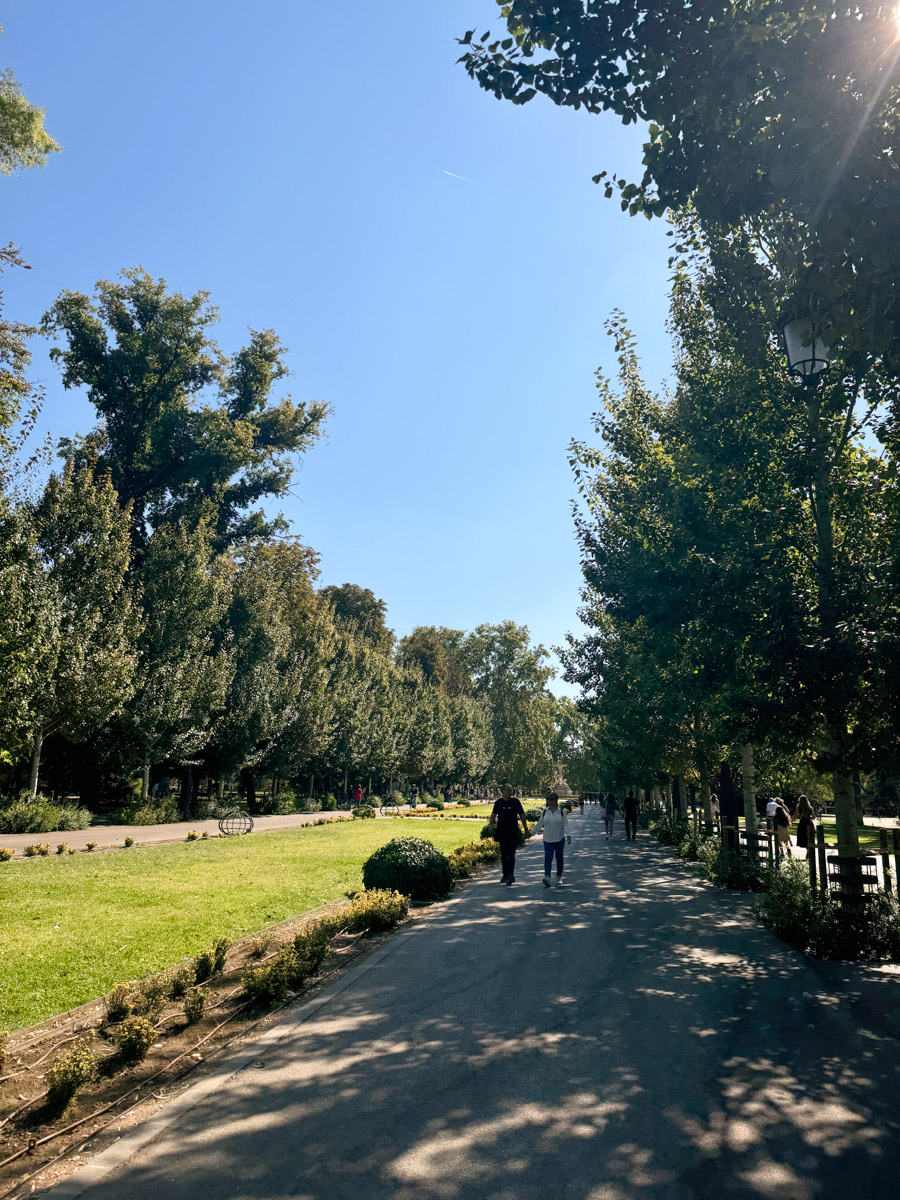
Don’t miss the park’s rose garden or the impressive Monument to Alfonso XII, which offers a stunning view over the lake.
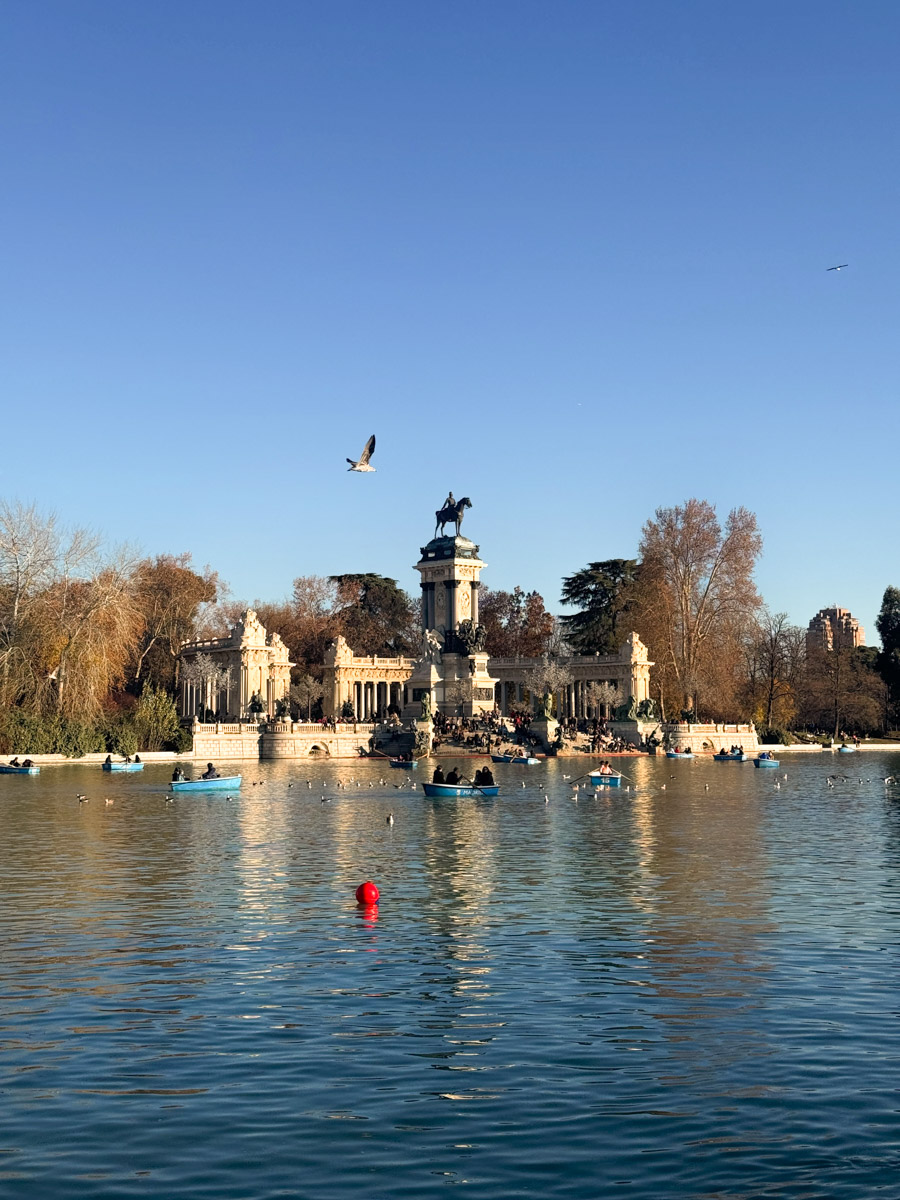
7. San Isidro: Madrid’s Patron Saint
Every year in May, Madrid celebrates its patron saint, San Isidro, with festivals, parades, and traditional food. It’s one of the city’s most colorful celebrations and a great way to experience local culture. During the festivities, you can enjoy churros dipped in chocolate, music in the streets, and locals dressed in traditional chulapo attire.
8. Madrid and the Spanish Civil War
Madrid played a pivotal role in the Spanish Civil War, enduring bombings and sieges during the conflict. Many landmarks and museums still tell the story of this tumultuous period in 20th century Spain. The Museo Nacional Centro de Arte Reina Sofía, for example, houses Picasso’s famous painting Guernica, a powerful symbol of the war’s impact.
9. Madrid’s Hidden Egyptian Temple
One of Madrid’s most unique attractions is the Temple of Debod, an ancient Egyptian temple gifted to Spain in 1968. It’s located in the Parque del Oeste and offers stunning views of the city, especially at sunset.
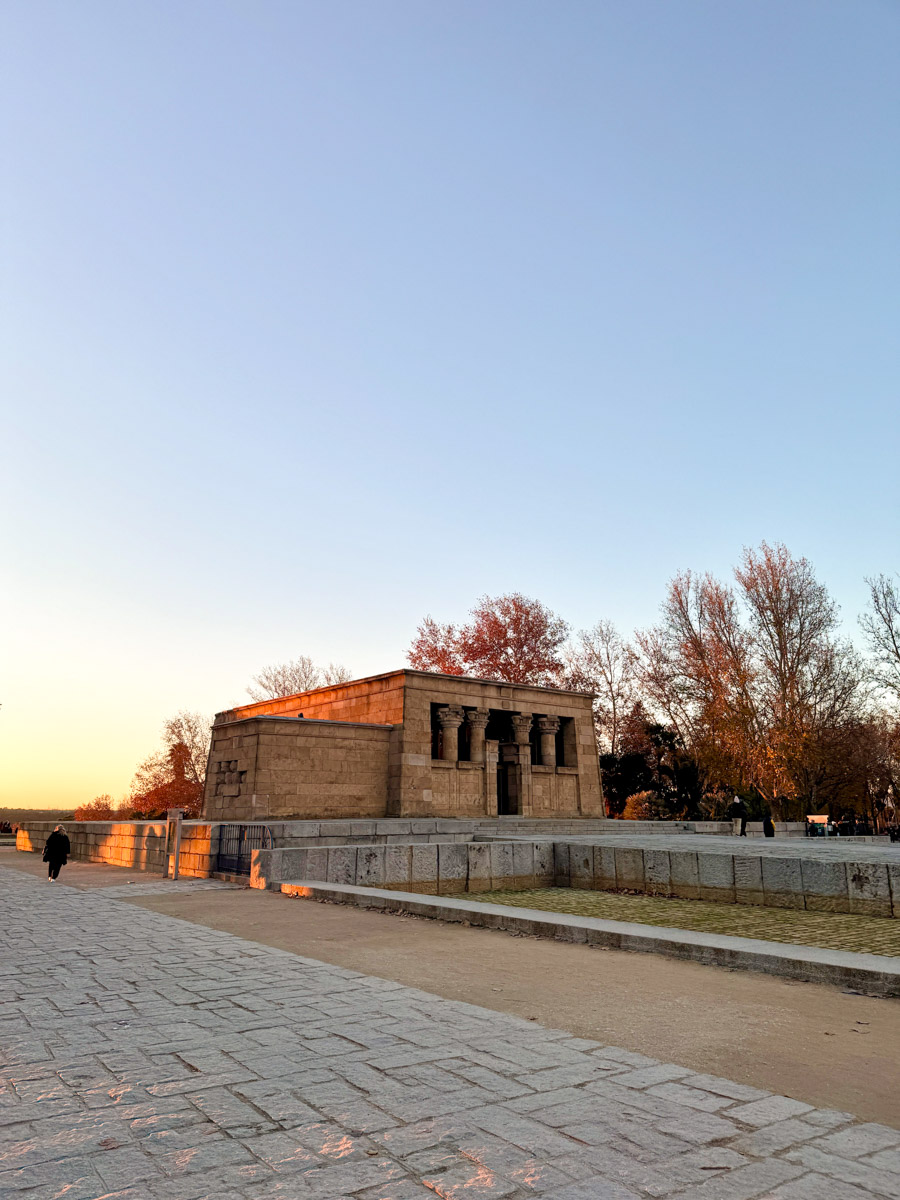
10. Madrid vs. New York: The Time Difference
A fun fact is that Madrid is six hours ahead of New York. This makes it perfect for keeping up with both the European and American schedules if you’re a global traveler. The city also shares similarities with New York in its vibrant nightlife and bustling streets, earning it the nickname “The City That Never Sleeps” in Spain.
11. Real Madrid: A Global Icon
No list about Madrid would be complete without mentioning Real Madrid, one of the most famous football teams in the world. With a rich history and countless championships, they’re a source of immense pride for Madrileños. A visit to the Santiago Bernabéu Stadium, their home ground, offers a glimpse into the legacy of this iconic team.
12. Madrid’s Love for Food Markets
Madrid is home to several iconic food markets, including Mercado de San Miguel and Mercado de San Antón. These markets offer a variety of local and international cuisines, making them a food lover’s paradise.
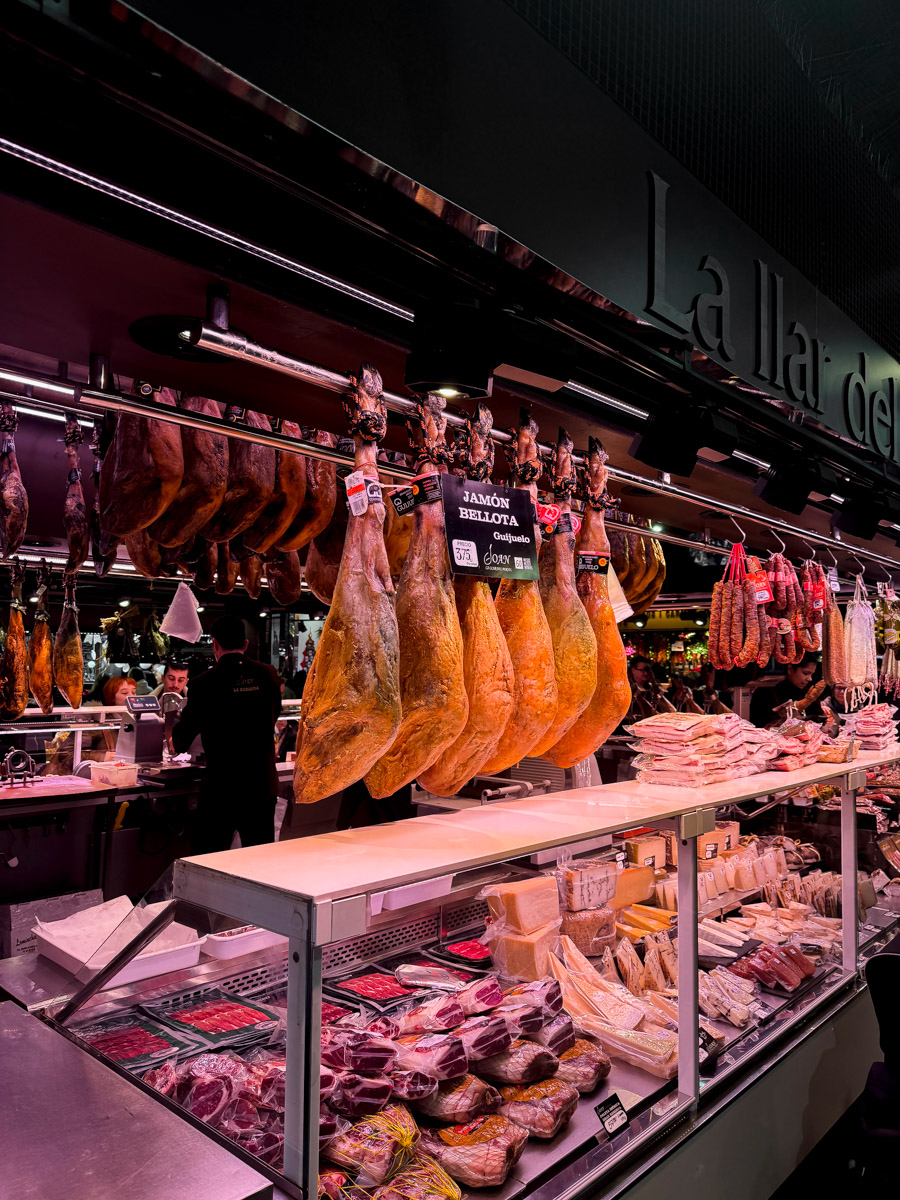
13. Madrid’s Bullfighting Tradition
While controversial, bullfighting remains a part of Madrid’s cultural heritage. The Plaza de Toros de Las Ventas is the city’s main bullring and hosts events during the season, particularly during the San Isidro festival.
14. Madrid’s Underground Secrets
Madrid has a unique underground attraction called the Andén 0 Chamberí Station, a restored 1920s metro station that serves as a museum. It provides a glimpse into the city’s transportation history.
15. Madrid’s Vibrant Nightlife
Madrid’s nightlife is legendary, with neighborhoods like Malasaña and Chueca offering endless options for bars, clubs, and live music. The city truly comes alive after sunset, making it a hotspot for night owls.

16. Madrid’s Literary Legacy
The Barrio de las Letras, or Literary Quarter, celebrates Spain’s literary greats like Miguel de Cervantes and Lope de Vega. It’s a charming area filled with historic homes, quaint cafes, and quotes engraved on the streets.
17. Madrid’s Futuristic Skyscrapers
The Cuatro Torres Business Area is home to Madrid’s tallest skyscrapers, showcasing the city’s modern side. These architectural marvels are a stark contrast to Madrid’s historic landmarks, offering a glimpse into its future.
What Is Madrid Famous For Shopping?
Madrid is a shopper’s paradise. From luxury boutiques along Calle Serrano to the bustling markets like El Rastro, you can find everything here. The city is also known for its traditional crafts, including fans, ceramics, and espadrilles. Don’t miss Gran Vía, often referred to as Madrid’s Broadway, for an array of high-end stores and entertainment options.
Fun Facts About Madrid in Spanish
For those learning the Spanish language, Madrid is a fantastic place to practice. Locals are known for their unique dialect and fast-paced speech. A fun phrase you might hear is “De Madrid al cielo” (“From Madrid to heaven”), a popular saying about the city’s charm. Learning Spanish in Madrid also means being exposed to the Castilian accent, considered the standard in Spain.
The Spain Flag in Madrid
You’ll notice the Spain flag prominently displayed throughout Madrid, especially during national holidays. The vibrant red and yellow colors symbolize the country’s unity and pride. The flag can often be seen flying over important buildings like the Royal Palace and government offices.
A Stroll Through History: Madrid’s Evolution
Madrid’s journey from a modest medieval town to a thriving capital city has been remarkable. By the 17th century, it was a center of Spanish power, and during the 19th century, it experienced industrial growth.
In the 20th century, the city modernized rapidly while preserving its rich heritage. Today, Madrid seamlessly blends historic charm with modern innovation, making it a unique destination for visitors from around the world.
FAQ'S
Madrid is known for its rich history, iconic landmarks like the Royal Palace, the Prado Museum, vibrant nightlife, and its football team, Real Madrid.
Madrid dates back to the 9th century but became the capital of Spain in 1561, giving it centuries of historical significance.
The Royal Palace, the Prado Museum, and Retiro Park are some of the most famous attractions in Madrid.
Barcelona in my opinion is better because you have beach and mountains in close proximity. Madrid is more of a "city" and has incredible architecture and feels more like Spain while Barcelona is Catalan and more international.
Real Madrid is known for its record-breaking achievements in football, including numerous UEFA Champions League titles, and its global fanbase.
Why Visit Madrid?
Madrid is a vibrant city that blends history, culture, and modernity. Whether you’re exploring the Prado Museum, relaxing in Retiro Park, or cheering for Real Madrid, there’s something for everyone.
The city’s rich history, dynamic art scene, and culinary delights make it an unforgettable destination. For more details, check the official tourism website to plan your visit. This is just a glimpse of what the capital of Spain has to offer—trust me, Madrid won’t disappoint!



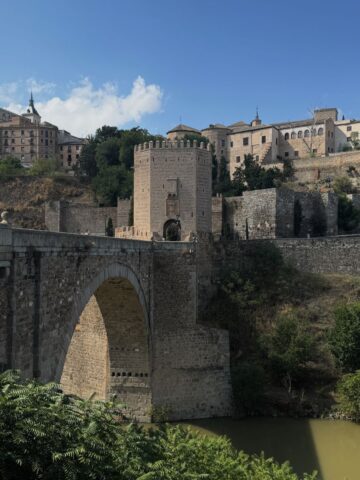

Leave a Reply